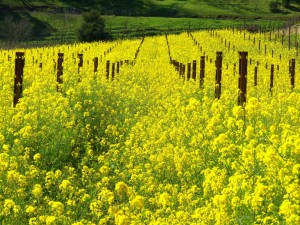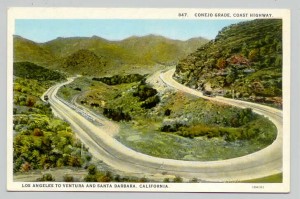
Apparently, wild mustard made an impression in late-1800s Southern California . . .
The wild mustard in Southern California is like that spoken of in the New Testament, in the branches of which the birds of the air may rest. Coming up out of the earth, so slender a stem that dozens can find starting-point in an inch, it darts up, a slender straight shoot, five, ten, twenty feet, with hundreds of fine feathery branches locking and interlocking with all the other hundreds around it, till it is an inextricable network like lace. Then it bursts into yellow bloom still finer, more feathery and lace-like. The stems are so infinitesimally small, and of so dark a green, that at a short distance they do not show, and the cloud of blossom seems floating in the air; at times it looks like golden dust. With a clear blue sky behind it, as it is often seen, it looks like a golden snow-storm. The plant is a tyrant and a nuisance, ” the terror of the farmer; it takes riotous possession of a whole field in a season; once in, never out for one plant this year, a million the next; but it is impossible to wish that the land were freed from it. Its gold is as distinct a value to the eye as the nugget gold is in the pocket.”
Ramona, 50
“Mustard grew everywhere along the coastal plain of southern California. To the tourist and city dweller it was a beautiful sight when acre after acre was in full bloom with the brilliant yellow flower. But to the farmer and cowman it was a pest of the worst kind. It did not grow much until late spring. Then it shot out of the ground, and what had looked like a fine crop of grain became a field of yellow mustard blooms. You had to wait until the mustard matured and dried before a combine harvester could thresh it. As it sometimes grew fifteen feet high, it was very difficult to harvest.”
Cattle on the Conejo, 100

